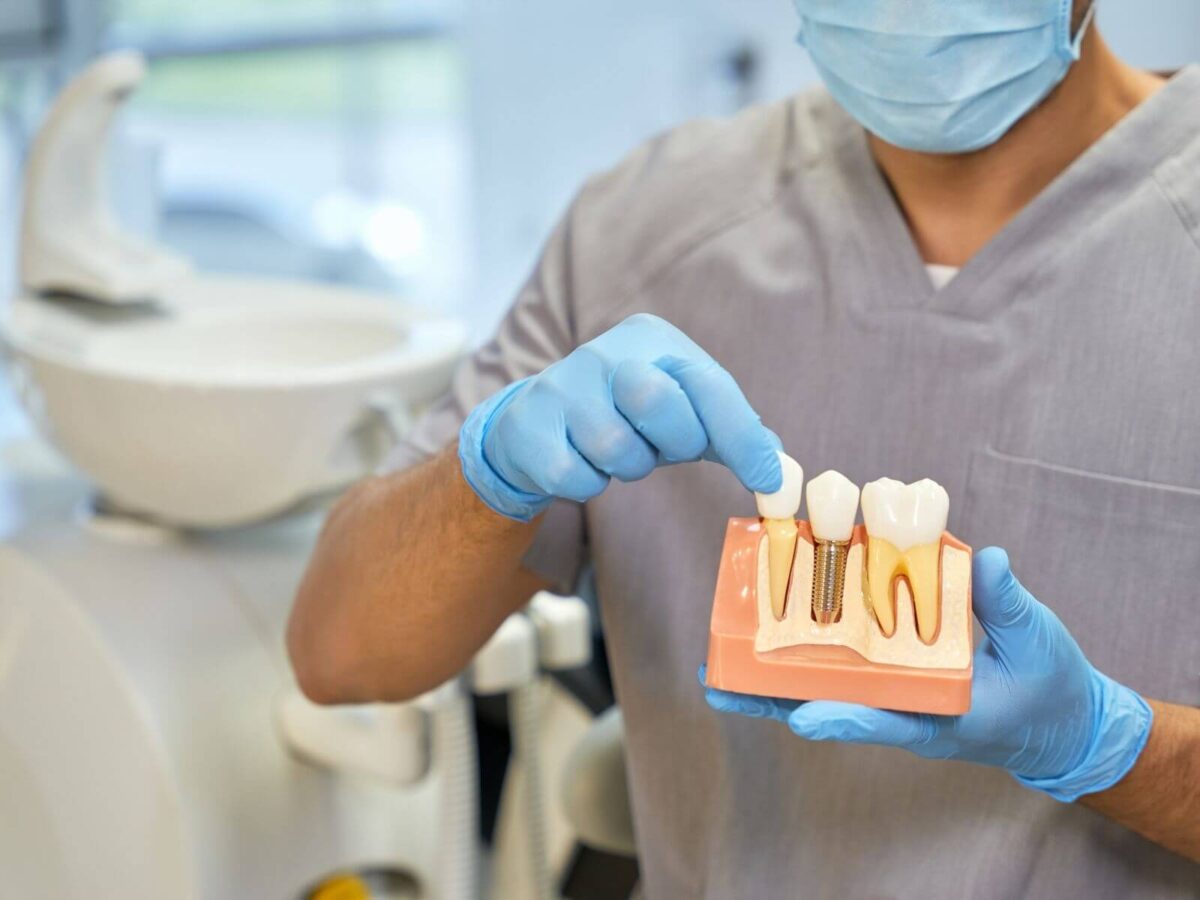Your new All-on-4 dental implants need proper oral care right after surgery to sustain their longevity and overall health. The dental restoration strategy, All-on-4 implants, effectively enhances your dental wellness and appearance.
The proper upkeep of dental implants depends on regular maintenance. Improper care can cause infections, gum disease, and other oral health issues. This article is a complete guide to cleaning all-on-4 dental implants. It includes instructions for maintaining oral health, which will be provided in this article.
All on 4 Dental Implants
You must clean the All-on-four dental implants periodically to ensure healthy oral hygiene. An improper cleaning process allows bacteria to create infections and cause discomfort among patients.
Failure to treat food debris will enable them to cause gum disease. Regular cleaning of these implants protects the system from developing such complications.
Denture wearers must regularly clean their All on four implants to keep them secure and comfortable. Proper maintenance requires daily brushings with soft toothbrush bristles, regular use of gentle soap or mouthwash, and flossing with care near the implants while refraining from consuming difficult-to-chew foods that might harm metal attachments or denture teeth.
Contact your dental professional immediately if you encounter problems with your All on Four implants. An adjustment or repair will be necessary. The effort you put into taking care of your All on four dental implants will result in a great appearance and good health for both your mouth and your implants.
Step-by-Step All-on-4 Dental Implants Cleaning Guide
Before providing the cleaning instructions, we want to highlight key aspects of oral cavity maintenance and implant prosthesis care. The All-on-4 system requires no daily removal or rinsing procedure after eating. The implant system stays in your mouth constantly because removal is unnecessary while sleeping. Thus, the main requirement is daily cleaning twice a day.
Step 1. Use Dental Floss to Clean in between Teeth
A dental prosthetic system lets you perform interdental hygiene as an initial requirement because it functions identically to actual jaws. Dental floss is necessary to clean particles trapped between teeth. Artificial teeth on the prosthesis do not eliminate the need for proper dental hygiene.
The primary reason for dental gum diseases and oral cavity problems is bacterial accumulation on dental replacement surfaces. Cleanliness practices for your all-on-4 dental implants and floss selection determine your teeth’s health status and the maintenance period of implant construction systems.
Step 2. Any Cleaning Routine Should Always Include Tongue Hygiene
Tongue hygiene requires the same focus as interdental cleaning methods. Proper oral cleaning tools include toothbrushes, flossers, and specialized tongue-cleaning instruments. Tongue bacterial plaque removal will create better oral hygiene conditions.
Step 3. Use a Toothbrush
After finishing tongue and interdental cleaning, the next step is to brush your teeth and prostheses. Soft, bristled toothbrushes are appropriate for this task. Wash away food particles from the prosthesis’s crown sections and all other components—thoroughly clean all junctions between the prosthesis structure and gum tissue.
A specific toothpaste made without fluoride should be used for cleaning. Wash your mouth thoroughly in both jaw positions, avoiding forceful pressure on any surface. To finish the process, rinse your mouth with warm water to remove the remaining toothpaste.
Step 4. Use a Mouthwash
Everybody needs to use mouthwash as part of their oral hygiene routine, including individuals who have implant installations.
Step 5. Use an Irrigator
You can adequately tend your all-on-4 dental implants by using an irrigator. Irrigator water blasting is necessary to effectively clean all prostheses and gum connections at least once every few days.
Step 6. Book a Dental Hygienist Appointment Twice a Year
Taking care of the All-on-4 implants must be performed by trained dental professionals. The dentist performing your treatment will schedule visits to check how your prosthesis and implants work along with the condition of your mouth. But that’s not all.
Professionals clean the All-on-4 system thoroughly to maintain prosthesis functions and eliminate plaque buildup above and underneath it during specialized dental hygienist visits.
Tips to Maintain All-on-4 Implants
Regular cleaning enhances All-on-4 implant durability, and a healthy lifestyle supports these benefits. Here are some essential tips:
1) Avoid Tobacco Products
Tobacco use compromises both your oral health and the All-on-4 implants.
- The implants and neighboring teeth can change color because of smoking.
- Your implants have a higher chance of gum condition development and damage.
- The healing process following implant installation gets slower.
- Using tobacco will hurt both your mouth health and overall health, but stopping this habit delivers immense health benefits.
2) Maintain a Balanced Diet
A healthy diet helps your gums and mouth remain in good health. Eat foods that provide essential nutrients.
- Dairy products (rich in calcium and vitamin D).
- Fresh fruits (source of antioxidants).
- Eat soft foods to prevent harming your dental implants or bridge
- structure. Substitute softer eating options since they provide better comfort for your dental implants.
3) Regular Dental Check-Ups
Visit your dentist regularly to maintain the good condition of your dental implants. During these appointments:
- To clean away built-up deposits, your dentist conducts professional dental treatment.
- The dental professional will assess the implants to identify parts that wear down or shift.
- Your dentist will explain the cleaning changes that you need to make.
- The dental team advises visiting their clinic every two years or more frequently when they suggest it. Obtain detailed dental scans through our Dental X-ray service.
Common Mistakes to Avoid while Cleaning All-on-4 implants
Here are the significant errors that reduce the lifetime of All-on-4 implants:
- Too strong toothpaste damages the implants’ surface, letting stains and plaque grow faster.
- Flossing is essential because toothbrushes cannot effectively remove dental plaque from between teeth. Our braces Treatment helps patients clean their teeth better by aligning them.
- Not booking professional cleanings risks the buildup of tartar, which may harm your implant function.
- Do not bite on ice cubes or pens since these items can harm the threaded parts of dental implants.
Conclusion
Reasonable care of All-on-4 dental implants is needed to keep them working well, looking nice, and staying strong. The success of your dental implants depends on daily care, including brushing, flossing, water flossing, mouthwash use, no smoking, and behavioral changes. Your dentist’s examination at Rockdale Dental and teeth cleaning sessions will protect your implants and oral health.




